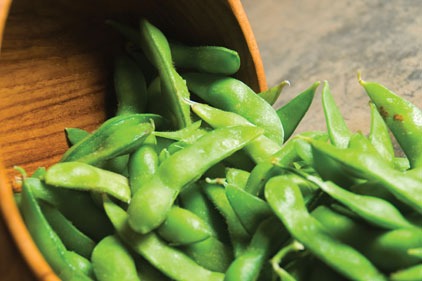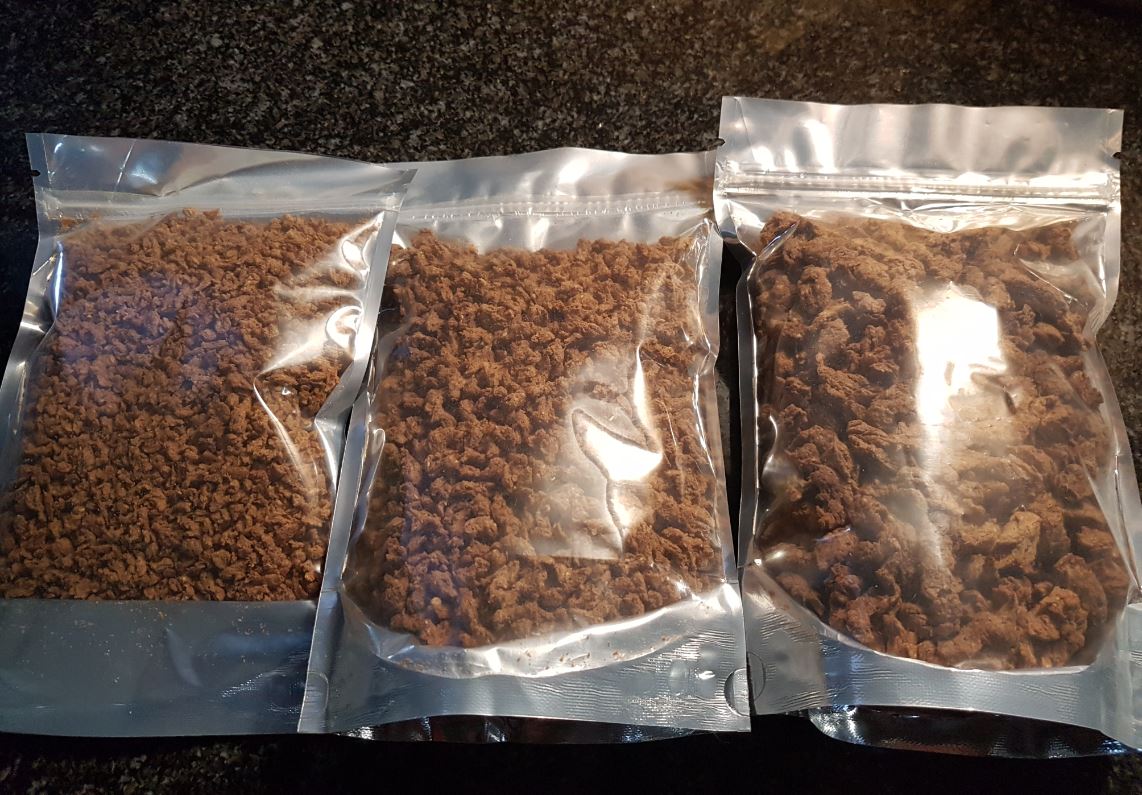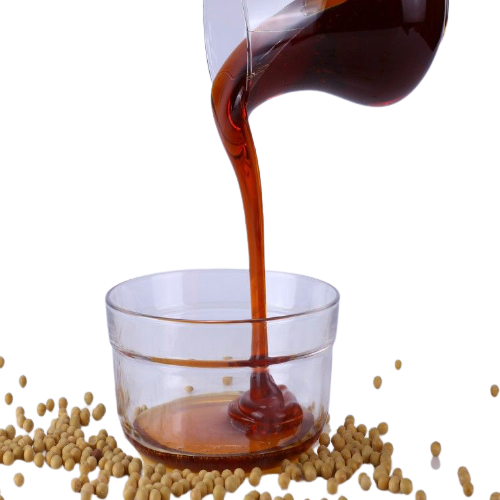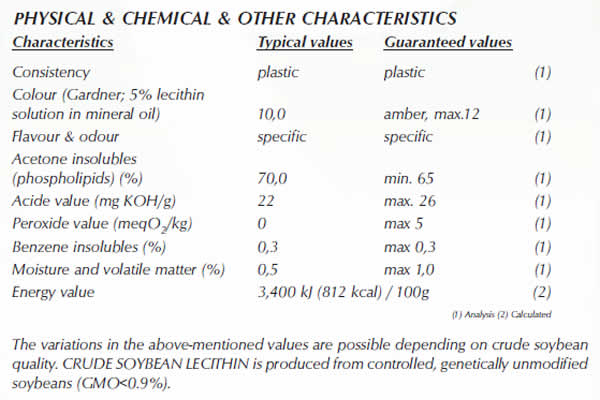
SOY LECITHIN COMPOSITION
Soy lecithin consists of three types of phospholipids; phosphatidylcholine (PC), phosphatidylethanolamine (PE) and phosphotidylinositol (PI). It is extracted from soybean oil and is generally used as a natural emulsifier or stabilizer in various food applications.
PROCESSING


FUNCTIONAL BENEFITS
Lecithin is utilized in a wide variety of food and industrial applications. The French scientist, Maurice Gobley, first discovered the substance in 1850, and named it “lekithos,” the Greek term for egg yolk. At the time, eggs provided a primary source of commercially-produced lecithin. Today, the majority of lecithin used in food applications is derived from soybeans.
Soy lecithin offers a multifunctional, flexible and versatile tool. It is probably best known for its emulsifying properties, which help promote solidity in margarine and give consistent texture to dressings and other creamy products. Lecithin is also used in chocolates and coatings and to counteract spattering during frying. Additionally, its unique lipid molecular structure makes lecithin useful for pharmaceutical and cosmetic applications and various industrial uses such as paints, textiles, lubricants and waxes.
HEALTH BENEFITS & CLAIMS
Lecithin provides an excellent source of choline, which is essential to every living cell in the body and is one of the main components of cell membranes. Not only is dietary choline important for the synthesis of the phospholipids in cell membranes, it is also necessary for methyl metabolism, cholinergic neurotransmission, transmembrane signaling, and lipid-cholesterol transport and metabolism2. Without choline, the cell membranes would harden, prohibiting important nutrients from entering and leaving the cell. Scientists believe lecithin and choline may aid in memory and cognitive function, cardiovascular health, liver function, reproduction and fetal development and physical and athletic performance.
In 1998, the Institute of Medicine (IOM) of the U.S. National Academy of Sciences identified choline as an essential nutrient and recommended daily intake amounts3. And, in 2001, the U.S. Food and Drug Administration (FDA) approved a nutrient content claim for choline, enabling food manufacturers to inform their consumers via the food label. Foods that contain over 110 mg of choline per serving may claim that they are an “excellent source of choline” and those with over 55 mg may claim that they offer a “good source of choline4.”
ALLERGENICITY
The allergens in soybeans reside in the protein fraction of the bean. The allergenic potential of specific soyfoods and/or ingredients is largely based on processing techniques and the amount of protein or protein residue remaining in the final product5. The majority of soy lecithin used in food applications is derived from refined soybean oil that has been processed using the hot-solvent extraction technique, which eliminates most, if not all, allergenic proteins.
In 1998, Awazuhara et al published a study on the antigenicity of the residual proteins in soy lecithin and soybean oil, in which they tested soybean-sensitive individuals for reactions to soybean oil and soy lecithin. Researchers investigated the IgE- and IgG4-binding abilities of the soy lecithin and concluded that the proteins in soy lecithin have little antigenicity in regard to soybean allergy6.

Soya Lecithin, usually coming in a form of Soya :
- Crude lecithin
- Powder lecithin
- Granulate lecithin
- Liquid lecithin
Confectionery Industry
It is used in the production of various types of chocolates, chocolate products and toppings, and cacao spreads. It is added in quantities of up to 1% as calculated per the other ingredients. In addition to its favourable effect on the technological properties of the product, soya lecithin also has dietetic effects.
Dietetics and Parapharmaceutics
SOYBEAN LECITHIN is a natural source of potassium and phosphorus. Considering the fact that potassium has a beneficial influence on the nervous system, blood pressure regulation and normalisation of the muscle functions, and that phosphorus contributes to a metabolism balance and improves bones and teeth hardness, crude soybean lecithin is used in preparation of dietetic and pharmaceutical products as well as for supplementary diets for sportsmen and amateurs.
Baking Industry



